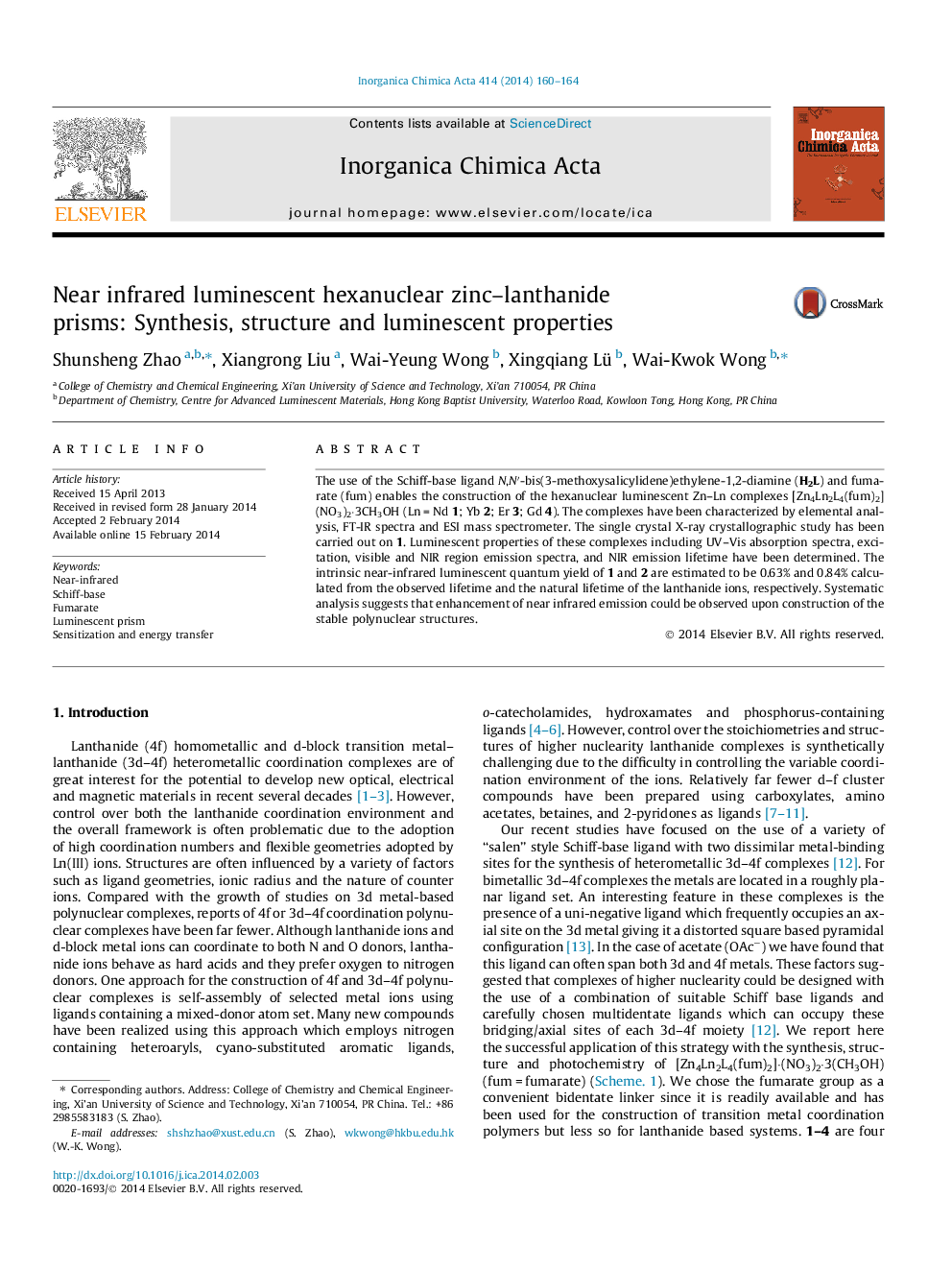| Article ID | Journal | Published Year | Pages | File Type |
|---|---|---|---|---|
| 1305679 | Inorganica Chimica Acta | 2014 | 5 Pages |
•Hetero-hexanuclear Zn–Ln arrayed complexes assembled from the Salen Schiff-base ligand and fumarate.•Arrangement of energy donors around the Ln3+ ion.•Enhancement of near-infrared luminescent properties.
The use of the Schiff-base ligand N,N′-bis(3-methoxysalicylidene)ethylene-1,2-diamine (H2L) and fumarate (fum) enables the construction of the hexanuclear luminescent Zn–Ln complexes [Zn4Ln2L4(fum)2] (NO3)2·3CH3OH (Ln = Nd 1; Yb 2; Er 3; Gd 4). The complexes have been characterized by elemental analysis, FT-IR spectra and ESI mass spectrometer. The single crystal X-ray crystallographic study has been carried out on 1. Luminescent properties of these complexes including UV–Vis absorption spectra, excitation, visible and NIR region emission spectra, and NIR emission lifetime have been determined. The intrinsic near-infrared luminescent quantum yield of 1 and 2 are estimated to be 0.63% and 0.84% calculated from the observed lifetime and the natural lifetime of the lanthanide ions, respectively. Systematic analysis suggests that enhancement of near infrared emission could be observed upon construction of the stable polynuclear structures.
Graphical abstractThe hexanuclear luminescent Zn–Ln complexes [Zn4Ln2L4(fum)2] (NO3)2·3CH3OH (Ln = Nd 1; Yb 2; Er 3; Gd 4) have been constructed. The structure of 1 was determined by single crystal X-ray crystallographic study. Photophysical properties of these complexes were determined and discussed.Figure optionsDownload full-size imageDownload as PowerPoint slide
